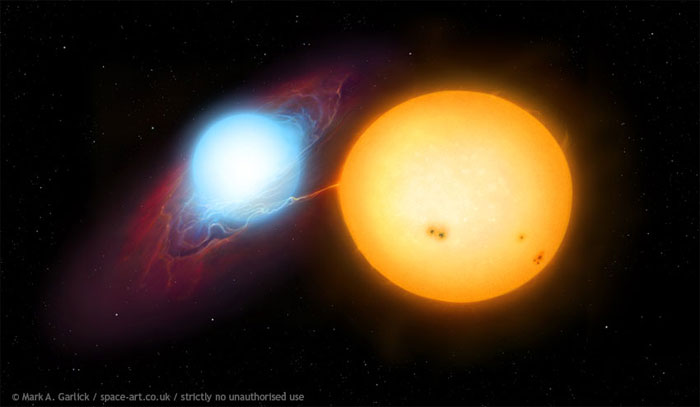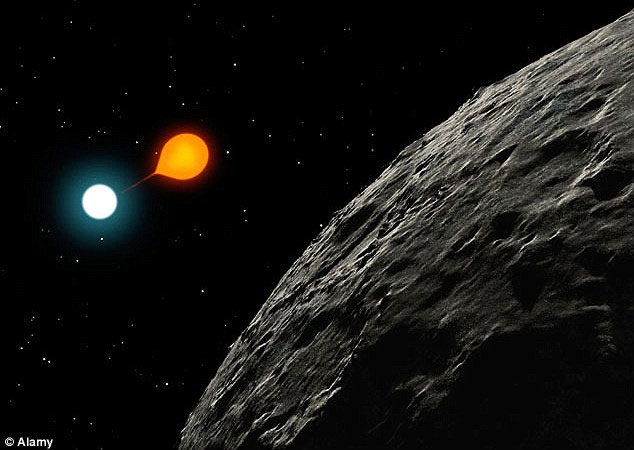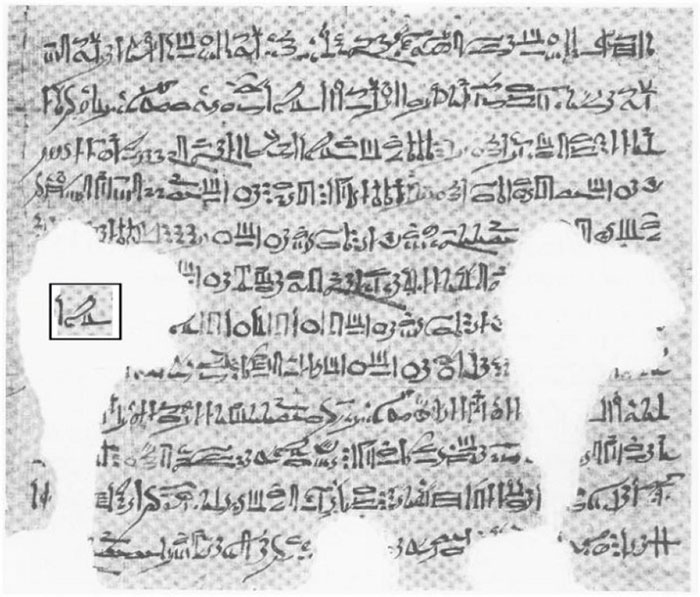Algol spotted the secret of 'Devil Star' Algol blinked off randomly
Evidence from the Cairo calendar has shown that the ancient Egyptians soon discovered "Devil stars" more than 92 thousand light-years away from us.
Algol is one of the metamorphic (altered stars ) of the constellation Perseus, more than 92 thousand light-years away. This is a typical example of a two-star model that surrounds a center, with a constant light and dark time.

The two stars revolve around each other, creating an interesting turn of lightning.
Algo was originally discovered by the ancient Greeks about 3,000 years ago. However, the ancient Greeks did not understand this star clearly and thought it was "Devil's Star" because of its flashing.

Star Algol is linked to the gods in the Cairo calendar.
Recently, researchers at the University of Helsinki (Finland) have discovered that the star was discovered by the ancient Egyptians during the same time period, but with very clear awareness of Algol's lightning cycle. .
According to Lauri Jetsu and Sebastian Porceddu from University of Helsinki, there is evidence that Algol is related to the Cairo calendar gods (Cairo Calendar - CC - from 1244 to 1163 BC).

Ancient script about Cairo calendar.
Specifically, the flashing cycle of the star Algol (2.85 days) and the Moon (29.6 days) is really strongly related to the gods inside this calendar. Jetsu said: "The evidence shows that the lucky forecast period of 2.85 days in the CC calendar is equal to that of the Algol starlight cycle in history."
Although still controversial, Jetsu and Porceddu say that their analysis is the most comprehensive compared to previous studies. In addition, it contributes to reinforcing the notion that Cairo calendar is the oldest historical text about "variable star" stars.
The study is published in Plos One magazine.
- 'Devilish stars' appeared during the week
- The secret of ... the nose
- Species of spotted hyenas inherit aggressiveness from ... mother
- Interesting secret about America's famous Devil's Tower
- America prepares to bring the Blue Devil 2 balloon to spy
- Thousands of devil rays are gathering under the sea
- 9 programming languages
- Why are yellow-spotted fish sold at high prices?
- Building Australia's
- New discovery prevented Tasmanian Devil from extinction
- Story about 'devil tree': Witness the massacre of 1 family and many other deaths
- Hung's hand hidden in 'Devil's Triangle' Nevada?
 Van Allen's belt and evidence that the Apollo 11 mission to the Moon was myth
Van Allen's belt and evidence that the Apollo 11 mission to the Moon was myth The levels of civilization in the universe (Kardashev scale)
The levels of civilization in the universe (Kardashev scale) Today Mars, the sun and the Earth are aligned
Today Mars, the sun and the Earth are aligned The Amazon owner announced a secret plan to build a space base for thousands of people
The Amazon owner announced a secret plan to build a space base for thousands of people